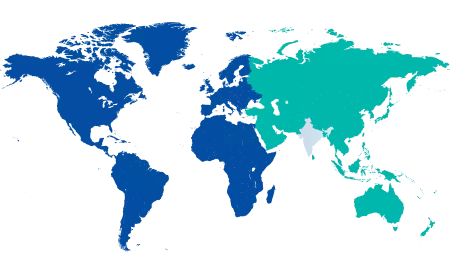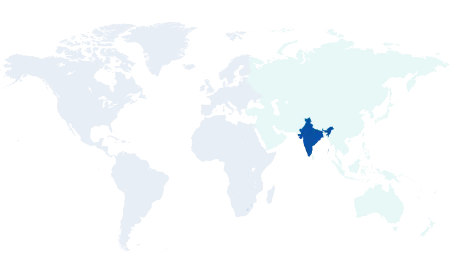-
Centre of
Excellence
Centre of Excellence
- Cancer Care/Oncology
- Cardiology
- Cardiothoracic Vascular Surgery
- Gastrointestinal Science
- GI Surgery
- Gynaec Oncology
- ICU and Critical Care
- Kidney Transplant
- Medical Gastro
- Medical Oncology
- Nephrology
- Neurology
- Neurosurgery
- Organ Transplant
- Orthopaedics
- Paediatric Cancer Care
- Paediatric Cardiology
- Paediatric Neurology
- Pulmonology (Respiratory and Sleep Medicine)
- Renal Sciences
- Robotic Assisted Surgery
- Spine Care
- Surgical Gastro
- Surgical Oncology
- Urology
- Woman and Child Care Centre
Other Specialities
- Accident and Emergency Care
- Anesthesiology
- Clinical Haematology
- Clinical Psychology
- Dental Medicine
- Dermatology
- Diabetes and Endocrinology
- Ear Nose Throat
- Electrophysiology
- Fetal Medicine
- General Medicine
- General Surgery
- Growth and Hormone
- Internal Medicine
- Interventional Radiology
- Laboratory Medicine
- Laparoscopic Surgery
- Microbiology
- Minimal Access Surgery
- Neonatology & NICU
- Neuro otology
- Nuclear Medicine
- Nutrition And Dietetics
- Obstetrics and Gynaecology
- Ophthalmology
- Oral Maxillo Facial Surgery
- Paediatric And Child Care
- Paediatric General Surgery
- Paediatric Intensive Care Unit
- Paediatric Surgery
- Paediatric Urology
- Pain Medicine
- Pathology
- Physiotherapy
- Plastic And Cosmetic Surgery
- Psychiatry
- Psychology
- Radiology
- Radiotherapy (Oncology Radiation)
- Rheumatology
- Transfusion Medicine
- Vascular and Endovascular Surgery
- Doctors
- EM Bypass
- International Patients



Clinics








- Self Registration
- In-Patient Deposit
- Mars - Ambulance
- Corporate & PSU
- Insurance Helpdesk
- Awards And Achievements
- Careers
- Contact Us

Image-guided brachytherapy
Image Guided Brachytherapy Treatment in EM Bypass, Kolkata
Why is Image Guided Brachytherapy performed?
Image Guided Brachytherapy (IGBT) is performed to deliver highly precise radiation directly to a tumour site, significantly reducing exposure to surrounding healthy tissues. It is particularly useful in the treatment of cancers such as cervical, prostate, breast, and head & neck malignancies, where precision is crucial for successful outcomes.
How should I prepare for Image-guided Brachytherapy?
-
Generally, the patient will undergo a general examination, which includes imaging tests, such as a CT scan, an MRI, or an ultrasound scan.
-
Specific information about the location and size of the tumour is determined.
-
A course of treatment is then formulated that may usually indicate Brachytherapy.
-
The patient will receive instructions to prepare for the treatment, which may include fasting or taking prescribed medications.
What happens during Internal Radiation Therapy in EM Bypass, Kolkata?
-
Patients on Brachytherapy treatment are asked to lie down on a treatment table, where the placement of the radioactive sources is determined.
-
This is achieved by relying on the imaging scans at every moment of the treatment process.
-
A thin, flexible tube with a camera and a laser fibre attached to the head of the tube is passed through the urethra up to the location of the tumour.
-
With extreme caution, radioactive sources are placed within or just beside the tumour.
-
This procedure is usually undertaken when the patient is under anaesthesia.
-
The procedure duration may vary, but it usually takes several hours.
Dedicated anaesthesia and pain management support during Image-guided Brachytherapy Treatment in EM Bypass, Kolkata, combined with infection control and post-procedure monitoring, enhance patient experience.
What happens after an Image-Guided Brachytherapy?
-
The patient is checked for any immediate side effects post-procedure.
-
The physician also teaches the patient how to care for themselves post-procedure through pain management, restricted activity, and follow-up visits to check the effectiveness of the treatment.
-
Hydration and diet are also promoted to ensure a smooth recovery process.
What are the benefits of Image-Guided Brachytherapy?
The integration of advanced imaging technologies has improved the accuracy and efficacy of Brachytherapy. Such advances have resulted in better tumour control, fewer side effects, and a higher quality of life for patients.
Manipal Hospitals, through its Internal Radiation Therapy in EM Bypass, Kolkata, offers advanced technology and expert oncologists to deliver comprehensive cancer care, establishing the hospital as a leader in oncology treatment.
Image-Guided Brachytherapy is the latest and most precise form of Intracavitary Brachytherapy, also known as Internal Radiotherapy. It is used to treat various types of cancer, including cervical, prostate, and breast cancer. This technique involves placing radioactive sources inside or near the cancerous tissue. Advanced 3D imaging allows healthcare professionals to deliver the therapy with high accuracy while minimising exposure to surrounding healthy tissues.
At Manipal Hospitals, Image-guided Brachytherapy Treatment in EM Bypass, Kolkata, is performed utilising advanced CT and MRI-guided brachytherapy platforms. This helps in precise visualisation of tumour margins and surrounding organs, allowing superior dose conformity.
FAQ's
The duration of Image-Guided Brachytherapy in EM Bypass, Kolkata, will depend on the type and stage of cancer. A session may last from a few minutes to several hours, depending on the case. Treatment typically spans a few weeks and may require multiple sessions, as accurate positioning and imaging are essential before placing the radioactive sources.
The procedure is tolerated well, and patients only experience minimal discomfort. Local anaesthesia is used during radioactive source placement to ensure comfort. Some localised pain and swelling can occur following the procedure, but this usually can be controlled with pain medications. Overall, the pain experienced is much less than from traditional surgical approaches.
Yes, anaesthesia is generally required for image-guided brachytherapy to ensure comfort during the procedure. Anaesthesia can range from local anaesthesia to general anaesthesia depending on the case and the patient's needs. Anaesthesia helps minimise discomfort during the insertion of radioactive sources.
Long-term effects from Image-Guided Brachytherapy are very rare but can be found. Some of the most common ones are tissue scarring, organ function alterations, or chronic pain. Thanks to improved imaging and precision in techniques, such effects become minimal. Following up with our healthcare team will help check and manage any long-term effects.
Yes, it is possible to treat children with Image-Guided Brachytherapy. This method is less common in children. But the choice to administer it will depend on the type and stage of cancer and the child's general health. Our paediatric oncologists take a multidisciplinary team opinion for the treatment of each child so that the treatment is both safe and effective.
Home Em-bypass Specialities Cancer-care Image-guided-brachytherapy



You’re on Our Indian Website
Visit the Global site for International patient services











